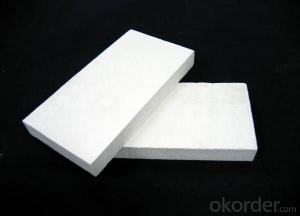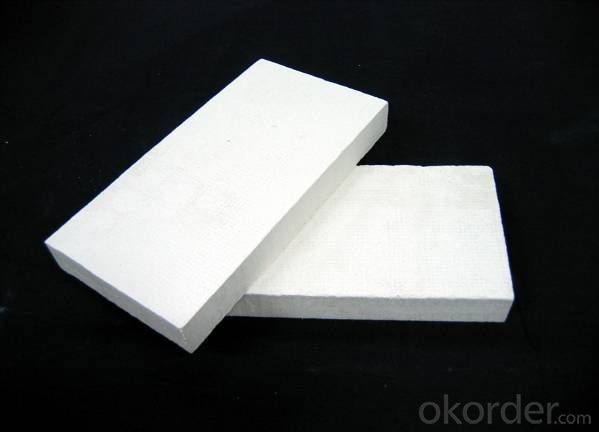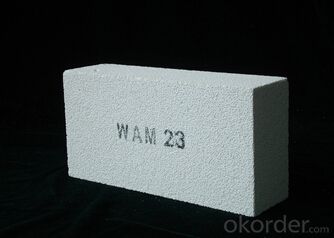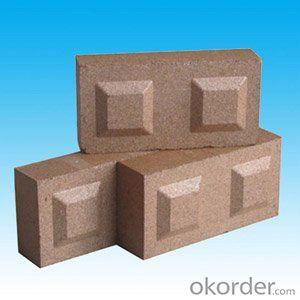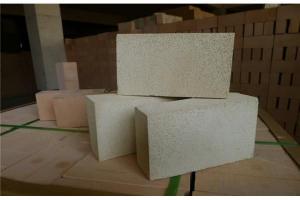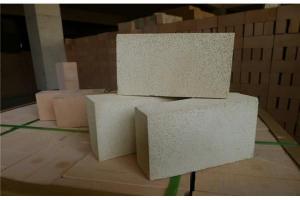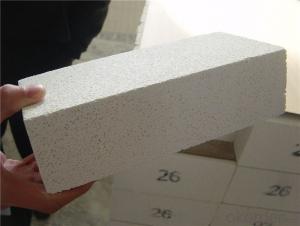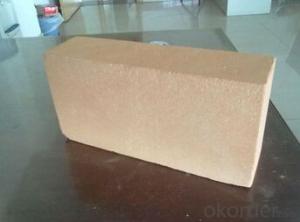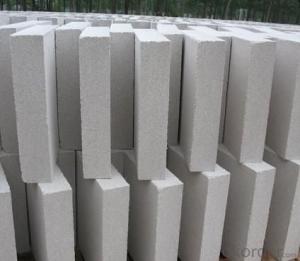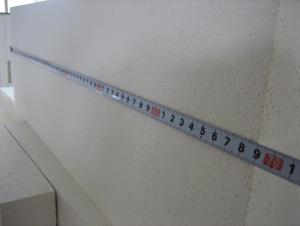Insulating Fire Brick - Refractory JM Mullite Insulation Brick ZDC-32
- Loading Port:
- Shanghai
- Payment Terms:
- TT OR LC
- Min Order Qty:
- 10 m.t.
- Supply Capability:
- 1000 m.t./month
OKorder Service Pledge
OKorder Financial Service
You Might Also Like
Refractory Mullite Insulating Fire Brick JM 23
OKORDER Series Insulating Bricks
OKORDER series insulating bricks are a kind of highly efficient, energy saving, low-carbon, environmental protection advanced products which are manufactured according to ASTM standard. OKORDER series products are the best lining and insulation materials in all types of industrial furnaces in the field of Metallurgy, Aluminum, Petrochemical, Ceramics, Power and Glass. They can be applied as heat insulation or no-melt erosion parts of the working layer. The products have been widely used in the following furnaces and achieved satisfactory results.
Application of Insulating Bricks
Metallurgy industry: Blast furnace, Hot blast stove, Reheating furnace, etc.
Petrochemical industry: Ethylene cracking furnace, Hydrogen production furnace, Primary reformer furnace, Reheating furnace, etc.
Ceramics Industry: Roller kiln, Pusher kiln, etc.
Glass industry: Glass furnace regenerator, etc.
Carbon Industry: Carbon roaster, etc.
Aluminum electrolytic industry: aluminum reduction cells,etc.
Other industries: Tunnel kiln, Shuttle kiln, etc.
Advantages of Insulating Bricks
Low Thermal Conductivity: More porosity brings excellent insulation effect, energy saving.
High Crushing Strength: High crushing strength under thermal state, volume stability.
Low Heat Storage: Little thermal storage when absorb more heat, energy saving effect is obvious.
High Purity: Low content of iron, alkaline and metal impurities.
Accurate Dimension: Precise brick size by machining, cutting and grinding special shapes, expediting bricklaying.
Picture of Insulating Bricks
FAQ
1. Which products do you have?
We have all kinds of refractory brick, castable, mortar, cement, ceramic fiber products, etc.
Or you could browse our products to choose what you need.
2. How do you control the products quality?
With strict quality control system throughout the materials selection and production process, our refractory and ceramic fiber products quality is effectively controlled to meet customer requirements.
From the raw materials selecting, our quality control begin. The quality certificates of raw materials are required and each batch will be tested before using. During production, the quality control are conducted by workers and then each piece will be sorted and examined by quality supervise.
3. Can you give me a brief introduction of the application of your products?
We are mainly specializing in the refractory materials in iron and steel, cement, glass, ceramics, petrochemical, electric power Industry, etc.
4. If I need your offer, what information do you need?
In order to choose suitable products, it will be appreciated to provide us the information, such us specification, technical data, order quantity, products application etc.
If any question, please contact us freely.
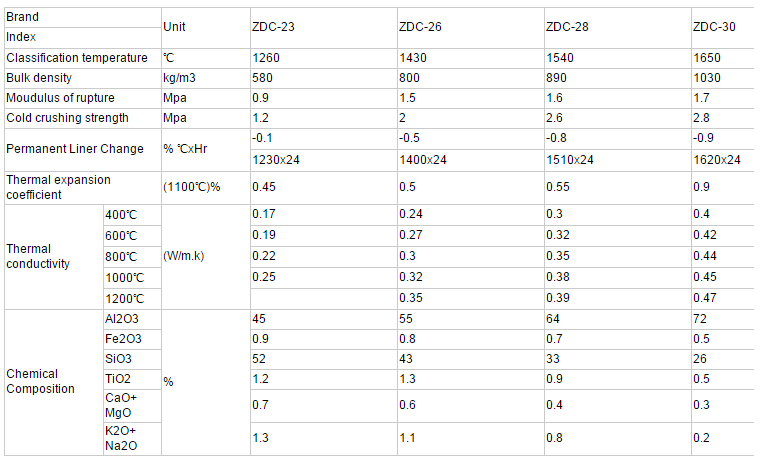
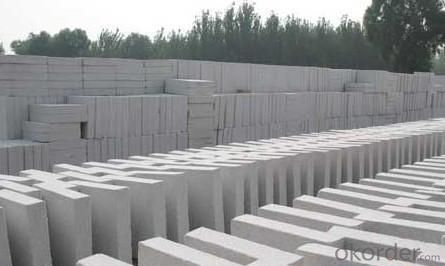
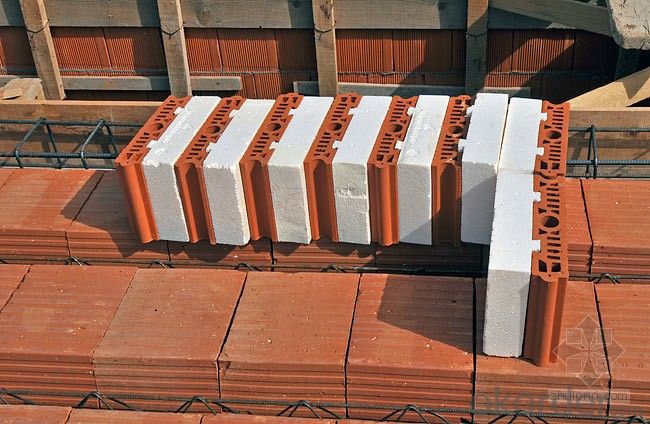
Application:
Insulation brick can be widely used for lining or insulation layers of various industrial furnaces and kilns in metallurgical industry, machine building industry, ceramic industry, chemical industry.
- Q: What are the safety precautions when working with insulating fire bricks?
- When working with insulating fire bricks, it is important to follow several safety precautions to ensure the well-being of yourself and others. Here are some key safety measures to consider: 1. Personal protective equipment (PPE): Wear appropriate PPE, including heat-resistant gloves, long-sleeved clothing, safety goggles, and a respiratory mask. These will protect you from potential burns, cuts, and inhalation of harmful dust or fumes. 2. Proper ventilation: Work in a well-ventilated area or use local exhaust ventilation to minimize exposure to dust and fumes that may be released during handling or cutting of the bricks. 3. Fire prevention: Keep a fire extinguisher nearby and ensure the workspace is clear of flammable materials. Insulating fire bricks are highly refractory and can withstand high temperatures, but it is still important to prevent accidental fires. 4. Manual handling: Insulating fire bricks can be heavy, so use proper lifting techniques and avoid overexertion to prevent strains or injuries. If necessary, use mechanical aids such as trolleys or lifting equipment to move the bricks. 5. Cutting and grinding: When cutting or grinding the bricks, use appropriate tools and ensure they are in good working condition. This will minimize the risk of accidents or injuries. Be cautious of sharp edges and wear protective gloves to avoid cuts. 6. Temperature control: Insulating fire bricks are designed to withstand high temperatures, but avoid direct contact with hot surfaces. Use appropriate tools or equipment to handle the bricks when they are at an elevated temperature. 7. Storage and handling: Store the bricks in a cool, dry place away from direct sunlight or extreme temperatures. Avoid stacking them too high to prevent the risk of collapse or toppling. 8. Training and knowledge: Ensure you have received proper training and are familiar with the characteristics and properties of insulating fire bricks. Understand their limitations and follow the manufacturer's guidelines for safe handling and usage. By adhering to these safety precautions, you can significantly reduce the risk of accidents, injuries, and health hazards when working with insulating fire bricks. Remember, safety should always be a top priority in any workplace.
- Q: Can insulating fire bricks be used in the construction of pottery ovens?
- Yes, insulating fire bricks can be used in the construction of pottery ovens. These bricks are designed to withstand high temperatures and provide excellent insulation, making them an ideal choice for pottery ovens where heat retention is crucial for efficient and consistent firing of pottery.
- Q: Can insulating fire bricks be used in ladles?
- Yes, insulating fire bricks can be used in ladles. Insulating fire bricks are designed to withstand high temperatures and provide thermal insulation. They are commonly used in applications where there is a need to maintain or control high temperatures, such as in furnaces, kilns, and ladles. Ladles are used for pouring and transferring molten metal or other materials, and the use of insulating fire bricks in ladles helps to minimize heat loss and improve energy efficiency. Additionally, insulating fire bricks can also provide a protective barrier against chemical reactions and erosion caused by the molten materials, making them suitable for ladle applications.
- Q: Are insulating fire bricks suitable for insulation in heat treatment furnaces?
- Yes, insulating fire bricks are suitable for insulation in heat treatment furnaces. Insulating fire bricks are designed to withstand high temperatures and provide excellent thermal insulation, making them ideal for use in heat treatment furnaces where maintaining consistent and controlled temperatures is crucial. These bricks help minimize heat loss, increase energy efficiency, and ensure uniform heating throughout the furnace, resulting in improved performance and cost savings.
- Q: Can insulating fire bricks be used in heat treatment furnaces?
- Indeed, heat treatment furnaces can make use of insulating fire bricks. These bricks are specifically engineered to possess a low thermal conductivity, enabling them to endure elevated temperatures while minimizing the dissipation of heat. This quality renders them ideal for deployment in heat treatment furnaces, where the preservation of a stable temperature is vital for the triumphant execution of the heat treatment procedure. Moreover, insulating fire bricks exhibit exceptional insulating attributes, thereby curtailing energy usage and enhancing the overall efficiency of the heat treatment furnace. Consequently, the utilization of insulating fire bricks in heat treatment furnaces is a prevalent practice across diverse industries.
- Q: Can activated carbon be antiseptic?
- Activated carbon is mainly with adsorption properties, there is no direct anti-corrosion effect.
- Q: Are insulating fire bricks resistant to phosphoric acid?
- Yes, insulating fire bricks are resistant to phosphoric acid.
- Q: Can insulating fire bricks be used as a backup insulation in refractory linings?
- Yes, insulating fire bricks can be used as a backup insulation in refractory linings. Insulating fire bricks are designed to have low thermal conductivity, which makes them effective in reducing heat transfer in high-temperature applications. Their insulating properties make them ideal for use as a backup insulation layer in refractory linings, helping to further reduce heat loss and improve overall energy efficiency. Additionally, insulating fire bricks are lightweight, which makes them easier to handle and install compared to other refractory materials. However, it is important to consider the specific requirements of the application and consult with a refractory engineer to ensure that insulating fire bricks are suitable for the specific conditions and performance requirements of the refractory lining.
- Q: What is the typical moisture content of an insulating fire brick?
- The typical moisture content of an insulating fire brick can vary depending on several factors such as the specific composition of the brick, the manufacturing process, and the storage conditions. However, in general, insulating fire bricks are designed to have a low moisture content to enhance their insulating properties and resistance to thermal shock. Typically, insulating fire bricks have a moisture content ranging from 0.5% to 2%. This low moisture content helps to prevent the bricks from cracking or spalling when exposed to high temperatures. It also minimizes the risk of moisture-related damage, such as freeze-thaw cycles or the release of steam when heated. To ensure the optimal performance and longevity of insulating fire bricks, it is recommended to store them in a dry environment and protect them from moisture during transportation and installation.
- Q: Can insulating fire bricks be used in the construction of industrial boilers?
- Industrial boilers can utilize insulating fire bricks for their construction. These bricks are specially designed with low thermal conductivity, making them ideal for retaining heat in high-temperature applications. In the case of industrial boilers, insulating fire bricks can be used to line the combustion chamber and other areas that require insulation. The use of insulating fire bricks in industrial boilers offers several advantages. Firstly, their low thermal conductivity helps reduce heat loss, thereby improving the overall energy efficiency of the boiler. This can lead to significant cost savings in the long run. Additionally, these bricks have a high resistance to thermal shock, making them capable of withstanding frequent temperature fluctuations without cracking or breaking. This is particularly important in boiler applications where temperatures can change rapidly. Moreover, insulating fire bricks are lightweight and easy to install, making them a convenient choice for construction projects. They can be shaped and cut to fit the specific requirements of the boiler, allowing for a precise and efficient installation process. In summary, the use of insulating fire bricks in the construction of industrial boilers is a suitable choice due to their excellent thermal insulation properties, resistance to thermal shock, and ease of installation.
Send your message to us
Insulating Fire Brick - Refractory JM Mullite Insulation Brick ZDC-32
- Loading Port:
- Shanghai
- Payment Terms:
- TT OR LC
- Min Order Qty:
- 10 m.t.
- Supply Capability:
- 1000 m.t./month
OKorder Service Pledge
OKorder Financial Service
Similar products
Hot products
Hot Searches
Related keywords
